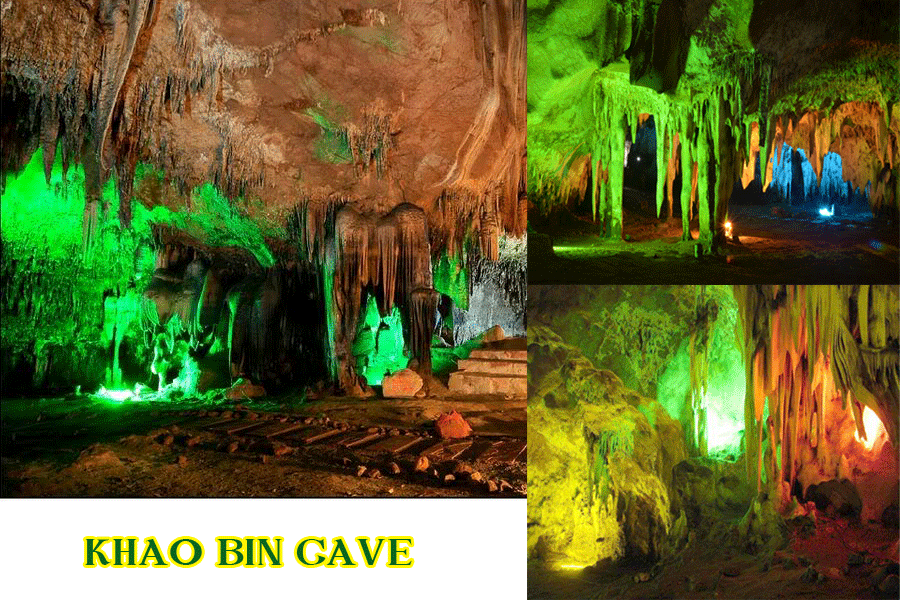Wat Prasri Ratana Mahatat Worawihan Temple is at Tambol Na Muang, Mueang Ratchaburi where archaeologists and historians believed that it was built from Dhavaravadee time around B.E. 13 to B.E. 18 then later changed to Khmer design with new Stupa added with surrounding wall. During Ayutthaya period around B.E. 20-21 the big stupa was changed into Ayutthaya style with 3 small stupas added. The main temple is in front of the big stupa with 2 Buddhist statues sitting back to back inside.
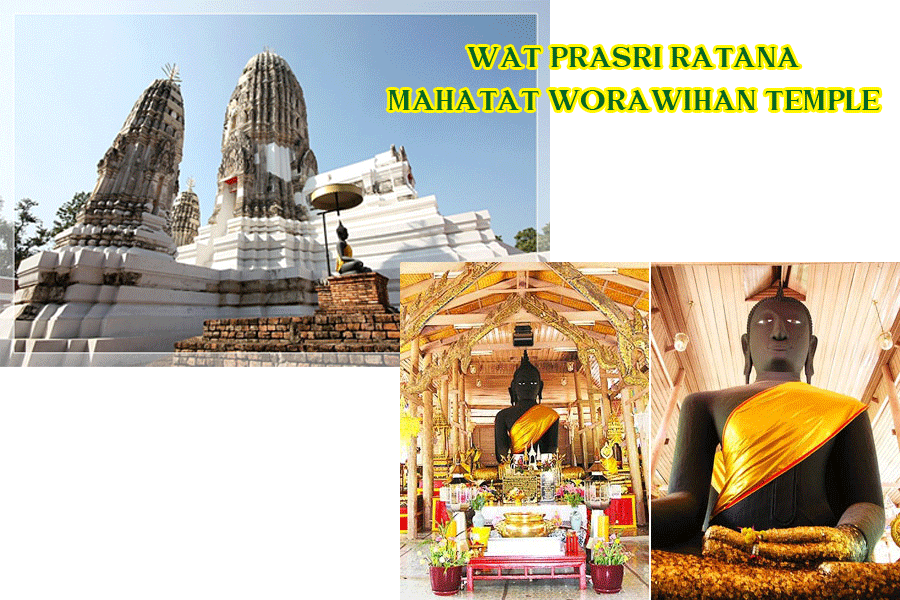
On the hill top at Tambol Khao Rang, Mueang Ratchaburi, situated a temple of Pra Awalokitesuan Bodhisat Kuan-im during King Rama V around A.D. 1873. The statue is 16-meter high and 9-meter width. Local people call this temple as Wat Nong Hoi, Khao Chao Mae Guan-im.
Every day there will be many Buddhist prople going up to worship Chao Mae Guan-im with their lunch provided free-of-charge. Visitors can enjoy their lunch with the beautiful view of Ratchaburi from the top. And beware of monkey.
On the other side of the mountain there is a big Buddha statue sitting for worshipers which could be seen from afar.
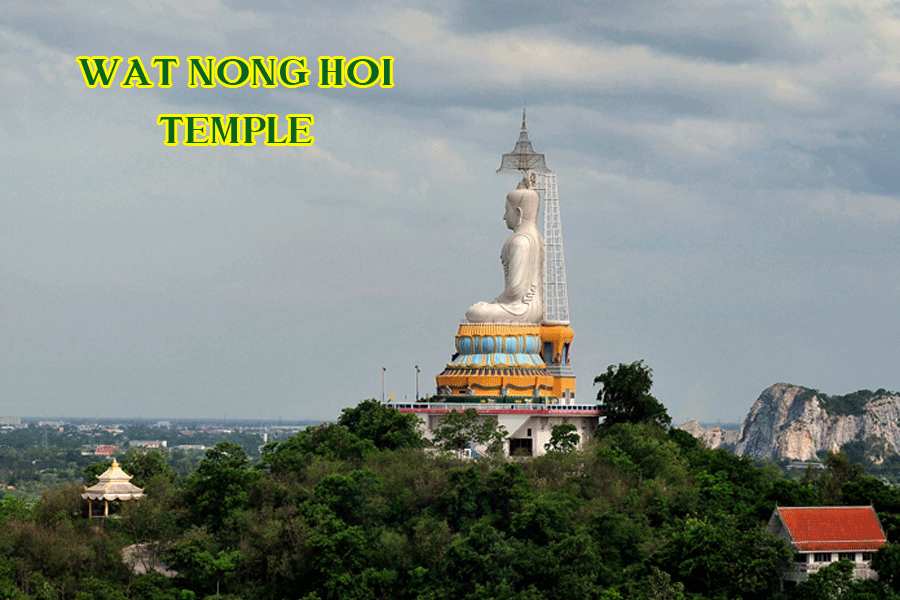
Before changing to National Museum, this old city hall was used from A.D. 1894 as Ratchaburi Province Hall and was later changed to museum to show everything in Ratchaburi such as historic and archaeology artifacts, local arts and cultural thing from various races such as Lao-song, Karen and Thai-Yuan. One of the important thing is the Royal Sword which was used as Provincial emblem of Ratchaburi and a statue Of Phra Bodhisat Awalokitesuan in Khmer style. One of five statues found in Thailand, the most perfect piece.
The Fine Arts Department has declared the old city hall as a national historic site since 10 May 1977.
Open every day except Monday-Tuesday and public holidays, from 09.00 – 16.00 hrs.
Entrance fee is 20 Baht/Adult (Free for Children) and 100 Baht for Foreigner.
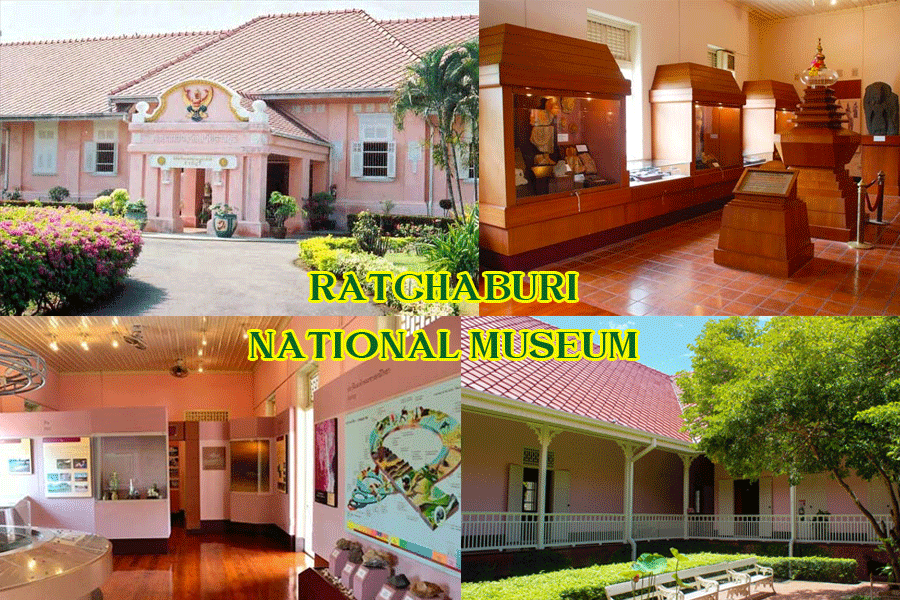
Situated at Tambol Khu Bua, Mueang Ratchaburi. This ancient site was found many archaeologist artifacts which indicated that this area in Ratchaburi was an important and prosperous city during Dhavaravadee period. The architectural design was derived from Kupta Dynast, India which shows how Buddhism was originated in Thailand more than 1,000 years ago. There are also many old artifacts found here such as Head of Buddhist Image which is now in Ratchaburi National Museum.
Nearby at Wat Khlong Suvarnakhiri there were many other ancient artifacts found around the site. Today there are few things in the ruins left to be seen.
Jipata Phan Sathan Ban Khu Bua Museum (All Folk Arts Museum) is at Tambol Khu Bua, near Wat Khlong Suvarnakhiri Temple area. This local museum was built by local people with the help from local organizations. Inside the building there are 2 floors which divided into big halls. Down stair hall was set to show Dhavaravadee artifacts, wax images of important priests and people, Hall of Thai-Yuan people community who moved from Chiang sean, Chiang Rai To Ratchaburi around A.D 1804. Upstairhalls there are Jok cloth weaving machine and a show case of 200 years old Thai-Yuan Jok Clothing and a Hall of Multi-ethnic races dressings in Ratchaburi such as local Thai, Yuan, Song, Lao-wiang, Karen, Mon and Chinese etc. Open from 08.00 – 16.00 hrs. every day. (advance booking would be appreciated)
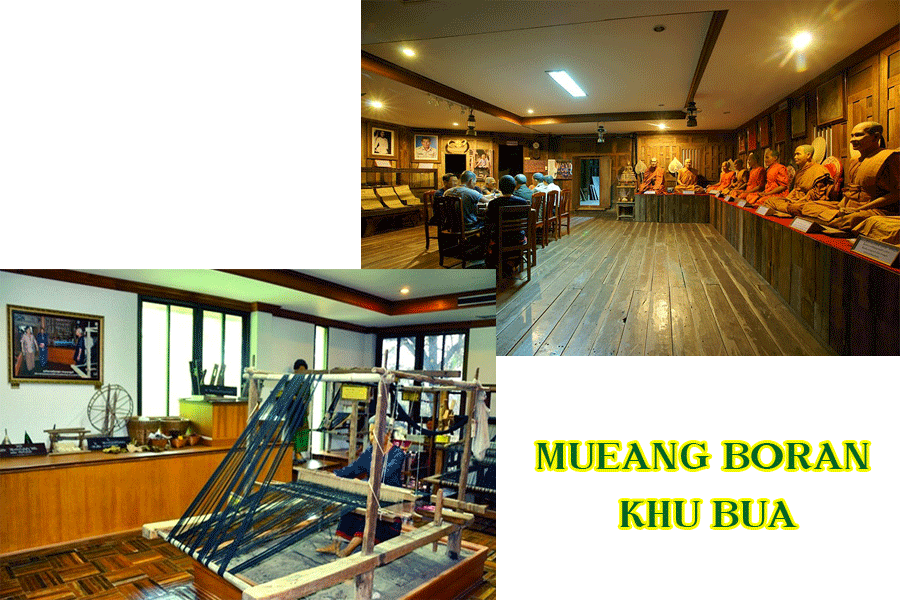
Khao Bin Cave is in Khao Bin Mountain range, Tambol Hin Kong, Mueang Ratchaburi having an area of over 5 Rais in the preserved forest. The cave length from the opening to the end is about 300 meters. Inside, the visions can observe the beautiful nature stalactites and the underground 8 big halls; visitor Hall, Spa Hall, anodat Stream Hall, Skunachat khuha Hall, Deva Spa Hall, kinnon Tasana Hall, Prueksa Himapan Hall, Utayan Tueadev Hall and the highlight of the halls is Khao Bin Hall where flying eagle-like rock is the signature. Inside the cave there are walking paths with lightings provided showing the beauty and imaginary sites for visitors. A small pond inside the cave is believed to be a sacred pond.
Besides, we would like to recommend Khao Bin Cave visitor not to step on or touch the stalactite stones as there will be water dripping through the cave ceilings to the floor which will make new stalactites growing on the ceilings and on the floor. Touching them will cause defective and grow no more.
Open everyday Monday through Friday from 09.00 – 17.00 hrs. Saturday and Sunday from 08.30 – 17.00 hrs. 20 Baht Fee each.
